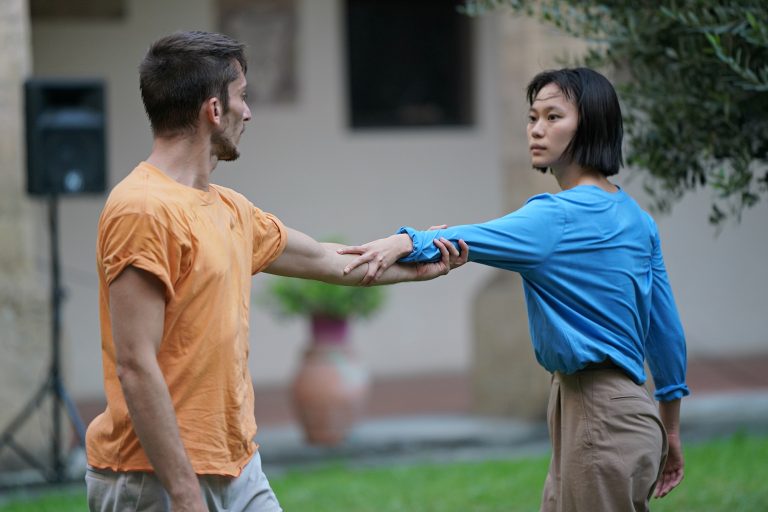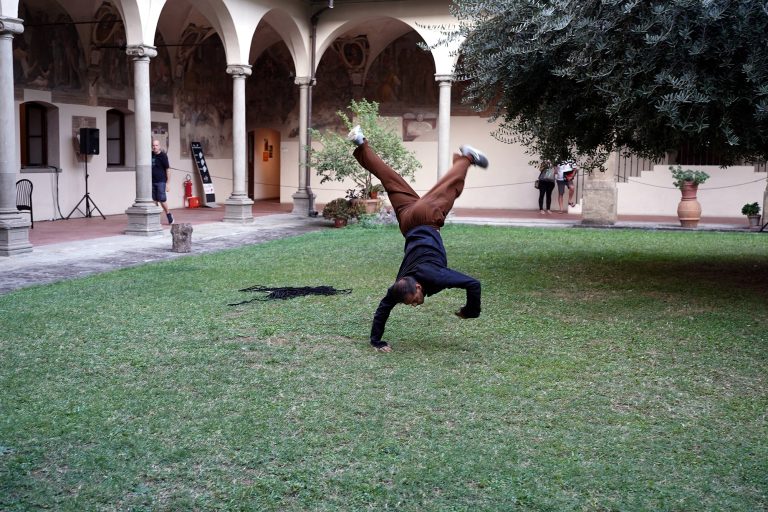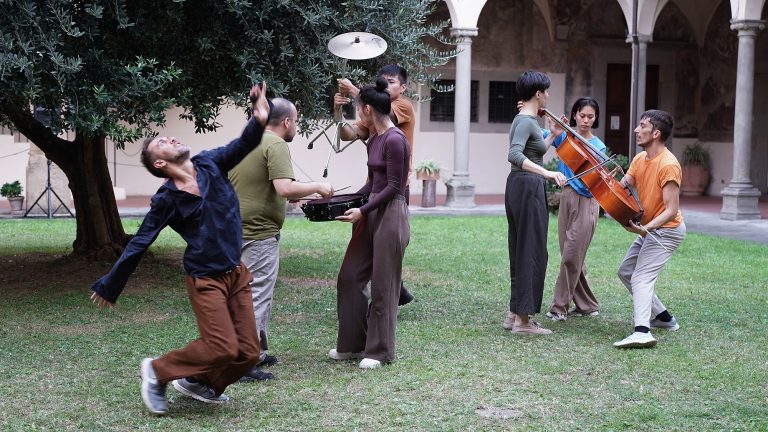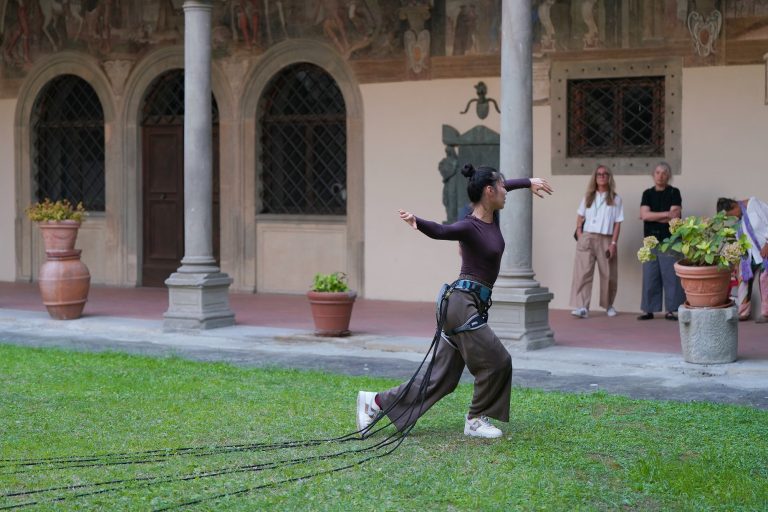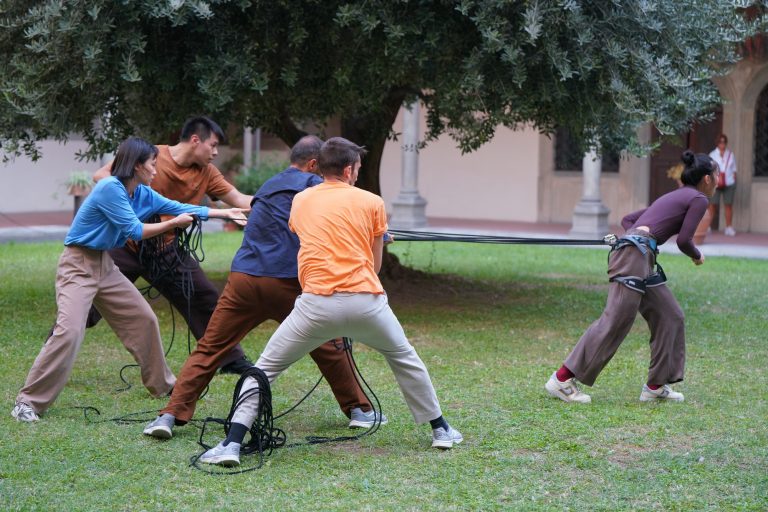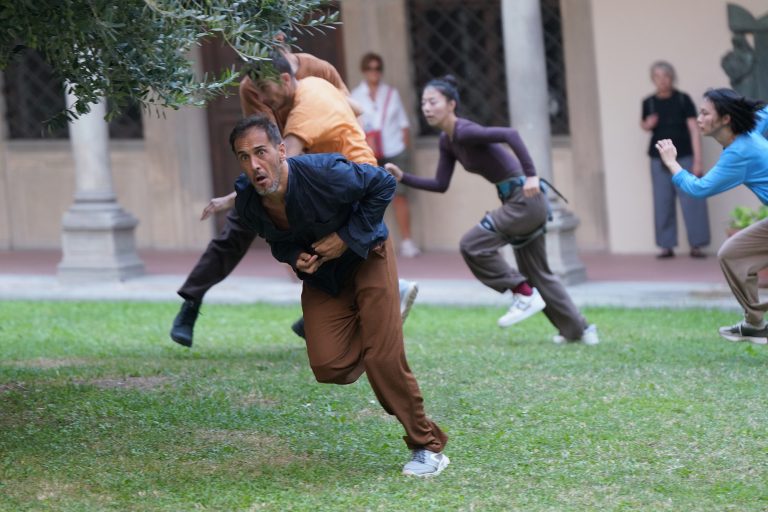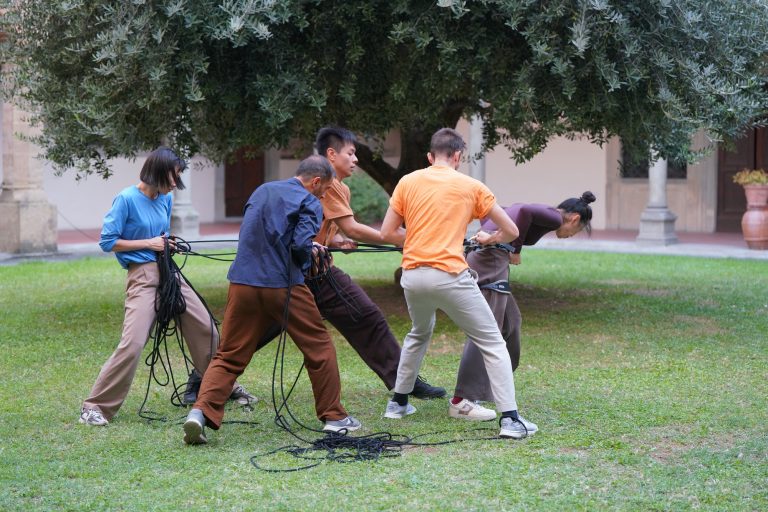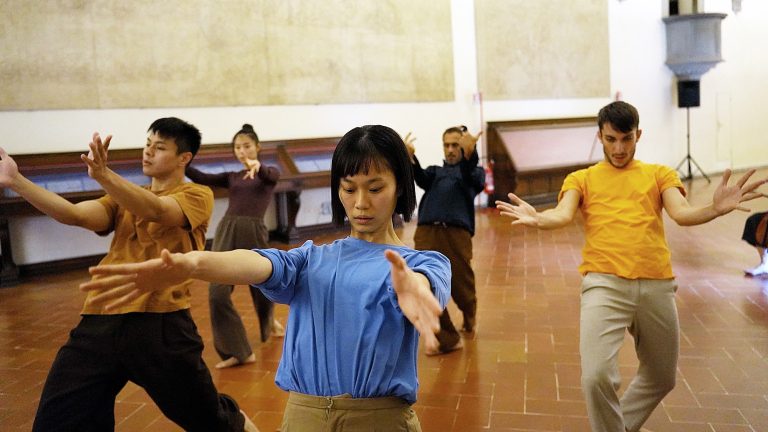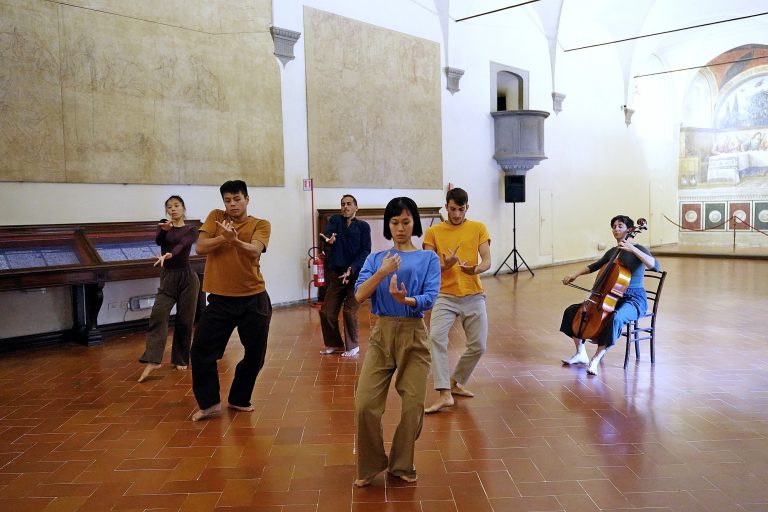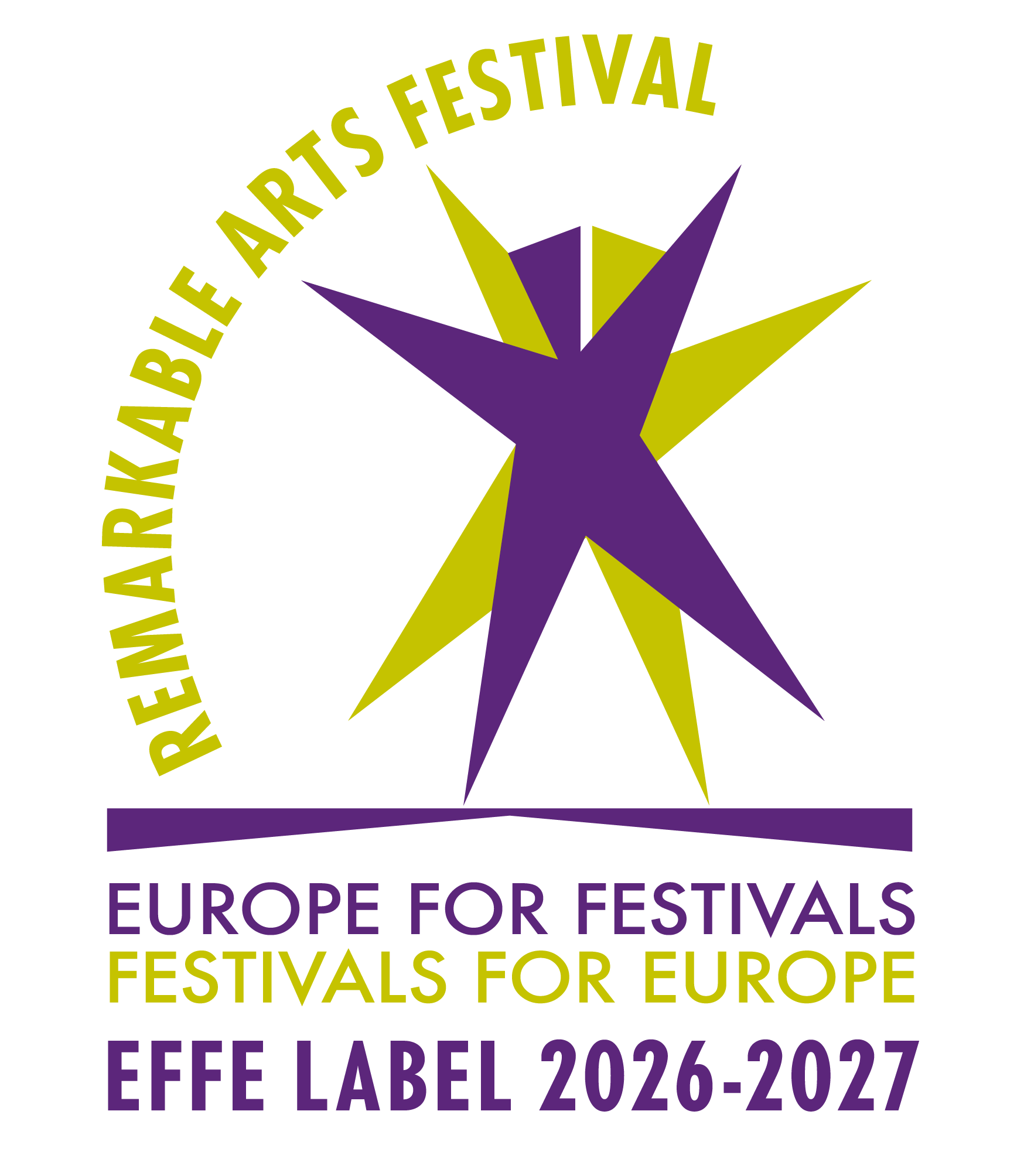Bigi Paoletti Fritz Company
LA PRIMA DANZA à coups de marteau 1° step
The project
The First Dance / La Prima Danza is a site-specific contemporary dance project, funded by the 2025 Kore.A.Round Culture – Bilateral International Collaboration Program for Arts & Culture. The project aims to explore new performative languages for cultural heritage sites, redefining them as vibrant and dynamic spaces capable of bridging memory and contemporaneity.
A collaboration between Fondazione Fabbrica Europa and Ahn Aesoon Company, one of the leading choreographic groups in Korea, it stems from the idea of transforming heritage into a platform for artistic experiences that foster a deeper connection between artworks and audiences, using dance and the performing arts as a language that is at once evocative and innovative.
LA PRIMA DANZA à coups de marteau 1° step
The first research phase – LA PRIMA DANZA à coups de marteau – 1st step. Open doors / A Look into the creative process – took place in September 2025 in Florence, within the Chiostro and the Cenacolo di Ognissanti. Here, choreographer and dancer
In this creative process, the relationship between body and space became central: the dancers did not merely inhabit the environment but established a physical and perceptual dialogue with it. Their bodies either merged with the architecture or stood in contrast to it, activating the space as a living, participating element.
The physical space thus became a sensitive landscape, resonating with emotional and perceptual vibrations arising not only from the language of movement but also from the live music that accompanied and integrated the choreography.
LA PRIMA DANZA à coups de marteau – 1st step was presented to the public from 17 to 20 September 2025 in the Cloister and Cenacolo of Ognissanti in Florence as part of the project Musica e danza nei Cenacoli fiorentini, funded by the Italian Ministry of Culture and carried out with Direzione regionale Musei nazionali Toscana of MiC.
Damiano Ottavio Bigi, dancer and choreographer, and Alessandra Paoletti, actress and director, began their collaboration in 2013 with the project Yuvaya Dönmek, Babam için – Back Home, to my father, conceived for the Istanbul Municipal Theatre. Since then, they have pursued both a pedagogical and creative path, collaborating with artists from diverse backgrounds and cultural contexts. In 2020, they founded their own company, the BIGI PAOLETTI Fritz Company.
Their work is born out of a dialogue among different languages, moving between dance, theatre and visual arts. Their research’s essential elements come from the exploration of compositional, dramaturgical, and kinesthetic patterns, often drawn from scientific disciplines. Through constantly evolving narrative layers, they aim to create worlds imprinted not only on bodies but also extending to the spaces and landscapes they move through, seeking new forms of relationship between body, space, and time.
Choreography & Artistic Direction: Ae-soon Ahn, Damiano Ottavio Bigi, Alessandra Paoletti
Performers: Ji-hyeong Kim, Hyeon-seok Lee, Na-eui Kim, Yu-jeong Lim, Seong-hyeon Park, and Damiano Ottavio Bigi
Concept and Project Direction: Maurizia Settembri
Sound Design: Jeong-hun Pi
Costume Design: Seonoc Im
Production Managers: On Sim – Korea, Elisa Godani – Italy
Associate Producer: Sophie Hye-yeon Kim
International Collaboration Advisor: Andrea Paciotto
Selected project under the <2025 Kore•A•Round Culture>
Production and presentation: Fondazione Fabbrica Europa per le arti contemporanee (Italy), Ahn Ae-soon Company (Korea)
Sponsors: Ministry of Culture, Sports and Tourism, KOFICE (Korean Foundation for International Cultural Exchange), 2025 Korea•A•Round Culture
Seoul Tanz Station
With the support of MiC Ministero della Cultura
In partnership with Italian Cultural Institute in Korea
CROSS Festival, Verbania, Fondazione Egri Centro di Rilevante Interesse per la Danza, Fabbrica Europa / Secret Florence / Florence Dance Festival, Associazione Tersicorea / Cortoindanza, Cagliari
 |
Photogallery

